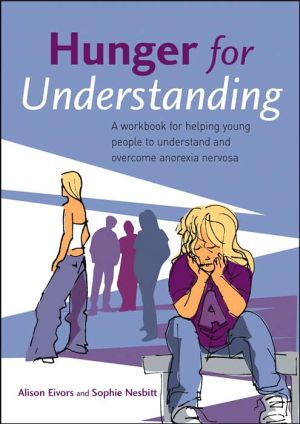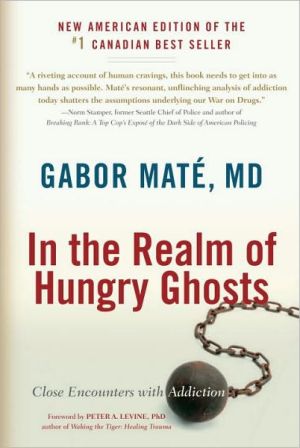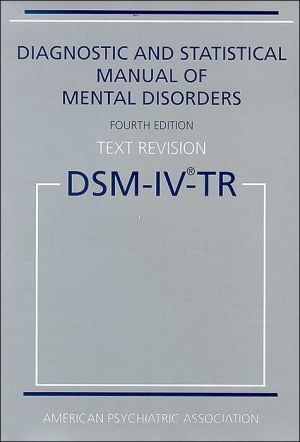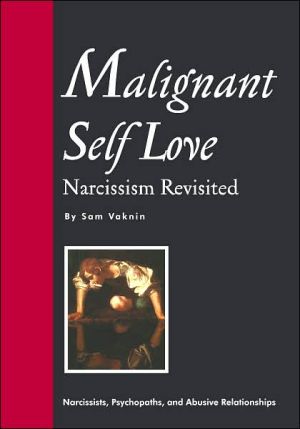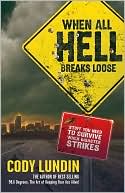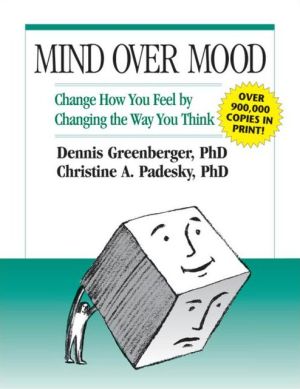Hunger for Understanding: A Workbook for Helping Young People to Understand and Overcome Anorexia Nervosa
Research suggests that anorexia nervosa and other eating disorders, whilst not prevalent in the population, have the highest mortality rate of all psychological problems. The development of effective treatment programs is therefore an important priority for health care professionals. This flexible book has been designed for use by therapists as part of a programme when working with young people with eating disorders. The aim is to help young people understand more about their own experience,...
Search in google:
Research suggests that anorexia nervosa and other eating disorders, whilst not prevalent in the population, have the highest mortality rate of all psychological problems. The development of effective treatment programs is therefore an important priority for health care professionals. This flexible book has been designed for use by therapists as part of a programme when working with young people with eating disorders. The aim is to help young people understand more about their own experience, and alongside guidance ofr therapists it includes a complete workbook for use by the young persons themselves. This presents tasks ranging from reflective thinking to drawing to promote engagement with difficulties as a first step to overcoming them. The workbook will also be available as an electronic supplement so that therapists can select which sections should be used with whom, and when.
Hunger for Understanding\ \ By Alison Eivors \ John Wiley & Sons\ ISBN: 0-470-02128-4 \ \ \ Chapter One\ The purpose of the workbook \ Therapeutic work with young people with eating disorders can be both extremely challenging and rewarding for professionals. Anorexia nervosa has a devastating impact on the life of the young person and that of their carer(s), but those suffering with it are often reluctant to accept the diagnosis initially and can lack motivation for therapy (Engel and Wilms, 1986). Engaging the young person can be a daunting task for the clinician, and they can struggle to find creative ways and resources to assist them. The Hunger for Understanding workbook is designed to provide therapists with a package of practical tools to help them in their work with such young people.\ Recent research literature suggests that some form of psychotherapy is essential for most young people with anorexia nervosa, and is more effective than non-specific supportive management by either a psychiatrist or dietician (Palmer and Treasure, 1999). The psychotherapy provided needs to address a range of issues - self-image, self-esteem, developmental, interpersonal and systemic issues and the acquisition of healthier coping strategies (Bell et al., 2000). Several studies have examined the efficacy of cognitive-behavioural therapy (Channon et al., 1989). These studies suggest that individual cognitive-behavioural therapy may be moderately effective in treating this condition, but possibly no more so than other focal therapies. However, Norris (1984) found that this type of therapy was helpful in reducing and managing individual symptoms of the disorder.\ Motivational-enhancement therapy has also been found to be useful in the treatment of anorexia nervosa. This therapy focuses on stages of change, with the main goal being to determine which stage the individual is in and then to assist with the movement through the stages to reach the ultimate goal of sustained change. Three studies have applied this model to eating disorder patients (Ward et al., 1996; Blake et al., 1997; Treasure et al., 1999). They concluded that the trans-theoretical model of change provides a useful approach to understanding the process of changing problem behaviours with eating disorders.\ Hunger for Understanding incorporates a combination of cognitive-behavioural and motivational-enhancement techniques. There is an important emphasis on tasks to do outside the therapeutic time and it is hoped this will help the young person put into practice in everyday life what is discussed in treatment sessions.\ The aim of this approach is to enhance motivation to change through the use of reflective tasks and psycho-education and to provide a structure through which therapists can gradually develop a trusting and collaborative therapeutic relationship. Woven into the workbook are lots of creative ways of exploring the young person's experience, to enable them to think about change, in a way that will help keep both the therapist and the young person engaged in the process.\ The illustrations and language used in the workbook are age-appropriate for adolescents with eating disorders and an externalisation model is adopted throughout the workbook. Externalisation is the process whereby the person is separated from the problem. Many people suffering from psychological difficulties often see their difficulties as part of them. This can be a very unhelpful position as it often leaves the person feeling that they have no control over the illness. Helping a young person externalise the illness can help them to make sense of their experience and feel more in control of it, and this is often an important part of the initial recovery process.\ * Who is Hunger for Understanding for?\ Hunger for Understanding has been designed for use with young people with anorexia nervosa. While the workbook was written with adolescents aged 11-16 in mind, depending on the ability of the individual, it may be helpful to use this workbook with younger children or young adults.\ We know from epidemiological studies that anorexia nervosa tends to have a younger mean age of onset than bulimia nervosa, with two characteristic peak ages of onset - one around puberty, and the other in late adolescence, typically when young people may leave home for the first time. Anorexia nervosa can, however, develop in children before puberty, and also in adults. We have focused on the adolescent age range, as incidence is highest in this age group. There are a number of reasons why this might be, one being that the transition from childhood to adolescence is such an important time in the development of personal identity. At the foundation of self-identity is often a heightened awareness of body image and young people can develop difficulties with sense of self, related body images and body concept (Carr, 1999). When young people are struggling with these concepts, they may be more vulnerable to certain psychological difficulties, such as eating disorders.\ Young people of both sexes can develop anorexia and are seen in clinical settings, and although girls outnumber boys, boys do represent a significant minority. In child populations, there appears to be a greater ratio of boys presenting with anorexia, in comparison with adolescent or adult groups. For example, Jacobs and Isaacs (1986) reported a gender ratio of 6: 14 (male:female) in pre-pubertal children with anorexia nervosa in comparison to 1:19 in a post-pubertal group. For these reasons Hunger for Understanding has been written with both male and female sufferers in mind.\ While Hunger for Understanding does focus specifically on anorexia nervosa, many of the issues and topics covered are appropriate for young people who display some eating disorder symptoms, such as a significant preoccupation with food, weight and shape and a restricted diet, but have not lost enough weight (15 per cent below normal expected for age and height) to classify them as 'anorexic' (Gowers and Bryant-Waugh, 2004).\ The workbook also covers a range of issues making it relevant and appropriate for young people who are being seen on an outpatient or inpatient basis.\ * Who can use Hunger for Understanding?\ Hunger for Understanding is intended for use by mental health professionals who work with young people, such as clinical psychologists, psychiatrists, counsellors, occupational therapists and nurses. These professionals are likely to possess the counselling skills that will enable them to contain and explore the emotional effects of working through the material in this workbook.\ We have anticipated that such professionals will have some previous experience of working with young people with eating disorders. For those who have not worked with this client group before, we would advise that they supplement their use of this book by familiarising themselves with current research and evidence-based practice in relation to child and adolescent eating disorders. The recommendations made in this book tend to be representative of current national and international thinking. For further information regarding this, please see the following published guidelines: Eating Disorders Association (1994), Royal College of Psychiatrists (2000) and the National Institute of Clinical Excellence (2003).\ * When and how should Hunger for Understanding be used?\ Many young people in the early stages of treatment will find the information in the workbook helpful. However, as some sections of the workbook are quite cognitively and emotionally demanding, this type of working style might not be appropriate for a young person in an acute stage of the illness.\ The workbook should be administered as part of a treatment package and is not intended as a 'quick answer' to prolonged difficulties. While the workbook was originally designed for individual therapeutic work, it can also be used as part of group work. There are two ways in which this can be approached. Therapists may want to select certain themes and exercises that can then be added to a pre-planned group of exercises. Alternatively, therapists may want to work through the whole workbook to provide a more complete approach.\ However, there are several issues that need to be considered when using the workbook as a group approach:\ 1 Young people suffering from anorexia nervosa may need some preliminary counselling work to prepare them for the group work. This may help them to engage in the work in a more meaningful way.\ 2 Many of the tasks are demanding and may elicit thoughts and feelings that are difficult to deal with. In these instances, measures such as rules about confidentiality and debrief time should be put in place to ensure that these tasks are suitable for a group format. For many of the tasks, small-group working may be more appropriate, with feedback conducted within the larger group.\ 3 The workbook contains a lot of information and numerous tasks for the young person to complete. Group facilitators need to review the workbook in conjunction with the needs of their group and plan the sessions accordingly. Within a group format, more discussion may be generated and thus it may be more effective to cover smaller sections of the workbook within the group, leaving other tasks for individual time. As there is a considerable amount of information within the workbook, it may be helpful to develop handouts to support thinking outside of the group format.\ 4 Group working is a dynamic process and evaluation and feedback can enhance this process. It is important to allow time for this process for both participants and facilitators.\ We are very interested in the workbook being used in a group format and would like to hear about people's experience of doing this, both participants and facilitators.\ * Accessing the workbook electronically\ All the workbook resources in this book are available free and in colour to purchasers of the print version. The materials can be accessed and downloaded as often as required. At the same website, there is an email link through which you can contact the authors of this book and share your comments with them.\ * Issues of confidentiality\ The workbook should be considered as part of the therapeutic process and issues regarding confidentiality should be explained and negotiated with the young person at the beginning of the work. Issues such as feedback to the wider team of professionals need to be considered and this will vary depending upon the context of the work. It is also essential that therapists consider how feedback will be given to parents and carers and negotiate this with the young person at the outset, taking into account the young person's age. On a more practical level, the therapist and young person should decide where the workbook is kept and whether, for example, the therapist will keep photocopies of the tasks the young person completes for their own files.\ (Continues...)\ \ \ \ \ Excerpted from Hunger for Understanding by Alison Eivors Excerpted by permission.\ All rights reserved. No part of this excerpt may be reproduced or reprinted without permission in writing from the publisher.\ Excerpts are provided by Dial-A-Book Inc. solely for the personal use of visitors to this web site. \ \
About the authors. Foreword. Acknowledgements. 1 The purpose of the workbook. Who is Hunger for Understanding for? Who can use Hunger for Understanding? When and how should Hunger for Understanding be used? Accessing the workbook electronically. Issues of confidentiality. 2 Psychological interventions for anorexia nervosa and the role of psycho-education. Psychological interventions. Motivational-enhancement therapy (MET). Cognitive-behavioural therapy (CBT). Psycho-education in anorexia nervosa. The psychological symptoms of starvation. The cultural context of eating disorders. Set-point theory. The physical effects of starvation. 3 Therapeutic challenges, skills and techniques. Challenges of work with people with anorexia nervosa. Physical issues. Psychological issues. Therapeutic skills and techniques. Externalisation. Instilling hope. Empathy. Developing emotional awareness. Rolling with resistance. Dealing with distress. Managing relapses. 4 The contents of the workbook and guidelines for use. Section 1: What is anorexia nervosa? Section 2: What causes anorexia? Section 3: How does dieting affect us? Section 4: How does anorexia affect you? Section 5: What keeps anorexia going? Section 6: The tricks anorexia plays. Section 7: Thinking about change. Section 8: Getting better. Section 9: Teamwork. Section 10: Becoming assertive. Section 11: Myths and questions about anorexia nervosa. Some good advice and messages of support. Ending the workbook. The Workbook. Useful contacts. References. Index.
\ From the Publisher"...a wonderful workbook as a therapeutic tool for work with young people referred with eating disorders." (International Journal for Adolescent Health, Vol 17 (4) 2005)\ "...easy to understand and accessible..." (Infant and Child Development, Dec 05)\ "...an important tool for the therapist..." (International Journal of Adolescence Med Health, vol 17, no.4, 2004)\ \ \
